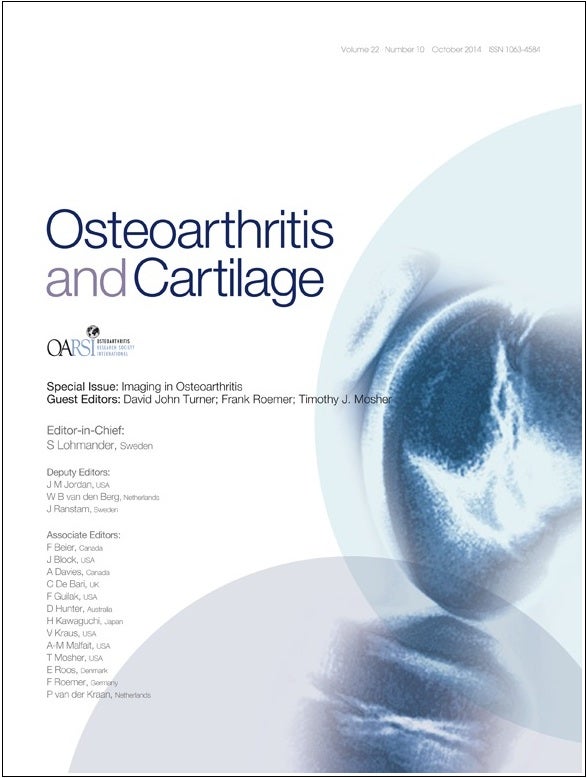Imaging in Osteoarthritis Study Published

Congratulations to Blaine Christiansen’s group for publishing this interesting collaborative manuscript on imaging protease activity in joints after ACL rupture. A link to the article is here.
Abstract:
Objective
Joint injuries initiate a surge of inflammatory cytokines and proteases that contribute to cartilage and subchondral bone degeneration. Detecting these early processes in animal models of post-traumatic osteoarthritis (PTOA) typically involves ex vivo analysis of blood serum or synovial fluid biomarkers, or histological analysis of the joint. In this study, we used in vivo fluorescence reflectance imaging (FRI) to quantify protease, matrix metalloproteinase (MMP), and Cathepsin K activity in mice following anterior cruciate ligament (ACL) rupture. We hypothesized that these processes would be elevated at early time points following joint injury, but would return to control levels at later time points.
Design
Mice were injured via tibial compression overload, and FRI was performed at time points from 1 to 56 days after injury using commercially available activatable fluorescent tracers to quantify protease, MMP, and cathepsin K activity in injured vs uninjured knees. PTOA was assessed at 56 days post-injury using micro-computed tomography and whole-joint histology.
Results
Protease activity, MMP activity, and cathepsin K activity were all significantly increased in injured knees relative to uninjured knees at all time points, peaking at 1–7 days post-injury, then decreasing at later time points while still remaining elevated relative to controls.
Conclusions
This study establishes FRI as a reliable method for in vivo quantification of early biological processes in a translatable mouse model of PTOA, and provides crucial information about the time course of inflammation and biological activity following joint injury. These data may inform future studies aimed at targeting these early processes to inhibit PTOA development.
